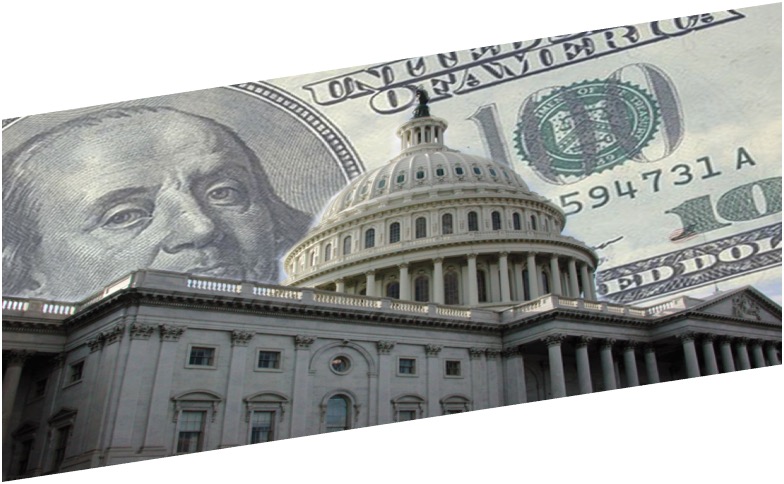League Examines the Influence of Money on Politics and Announces Students Inside Albany
- Wednesday, 13 January 2016 07:47
- Last Updated: Thursday, 14 January 2016 07:33
- Published: Wednesday, 13 January 2016 07:47
- Joanne Wallenstein
- Hits: 5052
 Are hefty contributions by the very few undermining democratic elections and equal representation? Do corporations and wealthy individuals have too much influence on the outcome of elections in the United States? Or, are they simply exercising their First Amendment right to engage in political speech?
Are hefty contributions by the very few undermining democratic elections and equal representation? Do corporations and wealthy individuals have too much influence on the outcome of elections in the United States? Or, are they simply exercising their First Amendment right to engage in political speech?
These questions were the focus of a public information session held by the League of Women Voters of Scarsdale (LWVS) on Monday night January 11. Presented by Nan Berke, Linda Doucette-Ashman, Cindy Dunne, Mary Beth Evans, Rita Golden, Deb Morel and Pam Rubin, the session was held to inform members of the public and the local League about the current state of money in politics and to update the national League position on campaign finance.
The Supreme Court's 2010 Citizen's United and other recent decisions have granted corporations and unions the same First Amendment rights as individuals in the area of campaign finance. Thus, the way has been cleared for an unlimited flow of money into the election process via super PACs. Super PACs are supposedly "independent" political action committees that do not "coordinate" their activities with a political candidate or his/her campaign. The Court therefore ruled that In addition, the Court's 2014 McCutcheon ruling, while maintaining limits on individual contributions to individual candidates, overturned the long-standing aggregate limit on an individual's combined contributions to all candidates.
In the wake of these Court decisions, increases in spending by super PACs has been dramatic. The national League website reports, "Since the Supreme Court decided Citizens United in 2010, $1 billion has been spent through super PACs, and 60 percent of that was given by only 195 individuals and their spouses." For the 2016 presidential race, just 158 families in the U.S. provided half of the early money or $176 million to the candidates. Commenting on the data, the New York Times said, "Not since before Watergate have so few people and businesses provided so much early money in a campaign, most of it through channels legalized by the Supreme Court's Citizens United decision six years ago in January 2010." For the 2014 election only 0.31% of the total adult population (less than 1%) contributed $200 or more to federal candidates, parties or PACs. But these contributions amounted to 66% of total individual contributions.
On Monday night January 11 members of the LWVS Money in Politics Committee traced the history of campaign finance law from the 1907 Tillman Act through 2014. The facts showed that when the Court majority swung to the conservatives in 2006, the Court overturned one hundred years of laws regulating campaign financing.
They then examined arguments for and against controlling campaign spending and possible ways to address the issue. Among these options are:
Increase Disclosure: Whereby the names and identities of individual donors and corporations are made public to inform voters. This could address "dark money" or political spending by anonymous donors.
Clean Elections: This legislation would focus on stronger disclosure laws, rules to prevent collaboration between special interest groups as well as ethics. Advocates contend that greater transparency would allow voters to know who is backing candidates and potentially reduce the influence of big money.
Public Financing of Elections: Rather than raise private funds, candidates would receive public monies to finance their campaigns, leveling the playing field. This would combat the pressure on candidates to fundraise and eliminate scenarios where the best-financed candidates win the race.
Protection of Voter's Rights: Laws would be passed to fight moves to disqualify voters and to ensure that all voters are informed about their right to vote.
Following the public session, the LWVS held a consensus meeting to review and update the current national League position on campaign finance in light of First Amendment considerations, the results of which will then be sent to the national League.
Also from the LWVS:
Students Inside Albany Conference
For the fifth consecutive year, the LWVS will select two high school students to send to the annual Students Inside Albany conference, to be held May 22-25, 2016. All Sophomore, Junior and Senior students who attend Scarsdale High School or who reside in the school district are eligible to apply.
Students Inside Albany is an intensive four-day conference designed to immerse students in the process by which public policy is proposed, revised and enacted in New York State and to educate them as to how they can influence and affect this process. Scarsdale students who attended this conference in the past were unanimous in their enthusiasm about the program, which allowed them to interact with students from all over the state, learn about their state government and meet state legislators.
The cost of the conference, including hotel and meals, will be co-sponsored by the League of Women Voters New York State Education Foundation, Inc. and our Scarsdale League.
Applications are available on the Scarsdale LWV's website (LWVS.org) and are due by February 2, 2016.
For more information, including photos from last year's conference, see the League of Women Voters, New York State at http://www.lwvny.org/ and go to the Youth Programs tab.
Last year's Scarsdale attendees are happy to answer questions from interested students. Contact Marie Ceske, Gabriela Dickson or Alex First at [email protected].
Please contact Joan Frankle (713-1250 or [email protected],) or Janet Korins (725-0859 or [email protected]) for more information or if you know someone who would like to apply for this opportunity.







